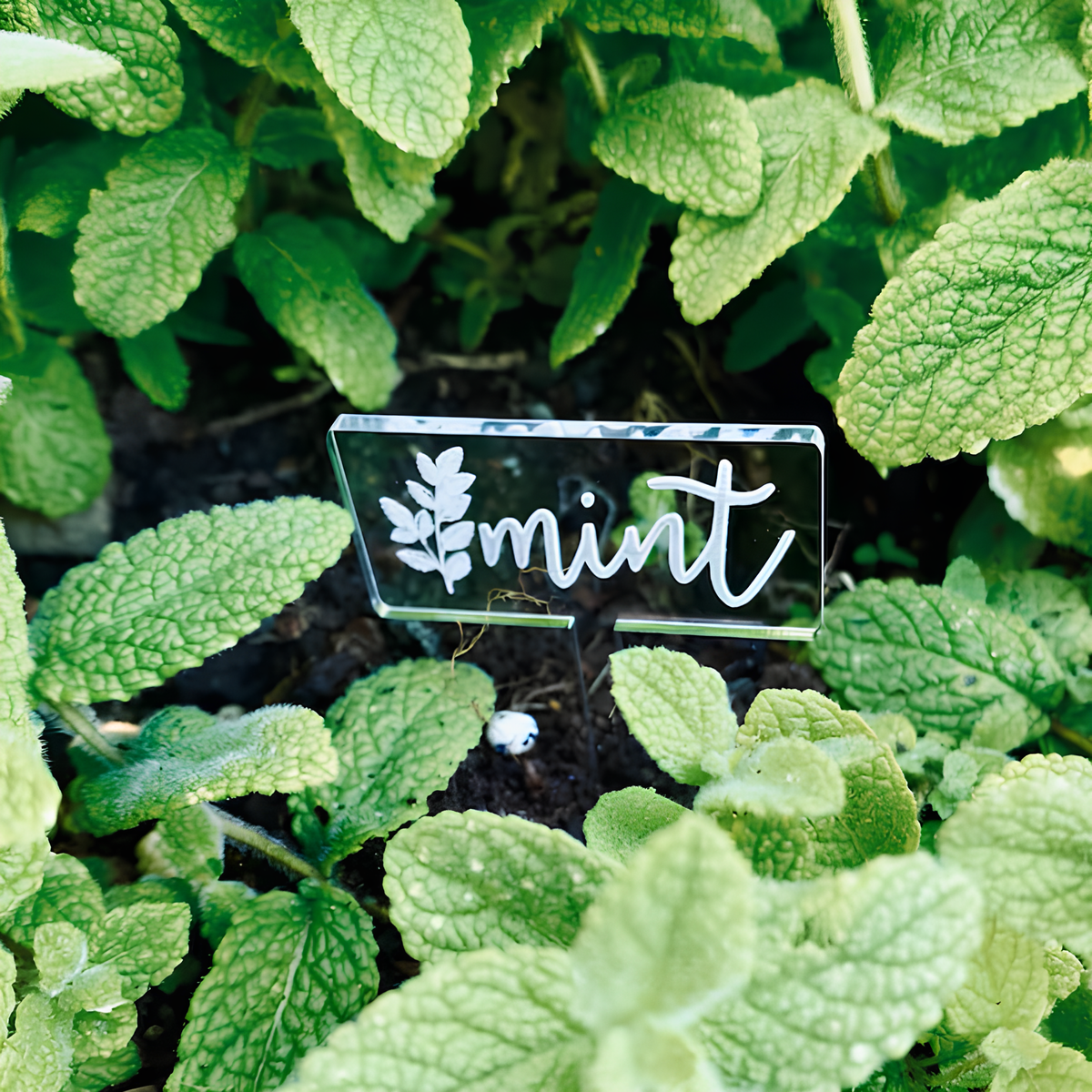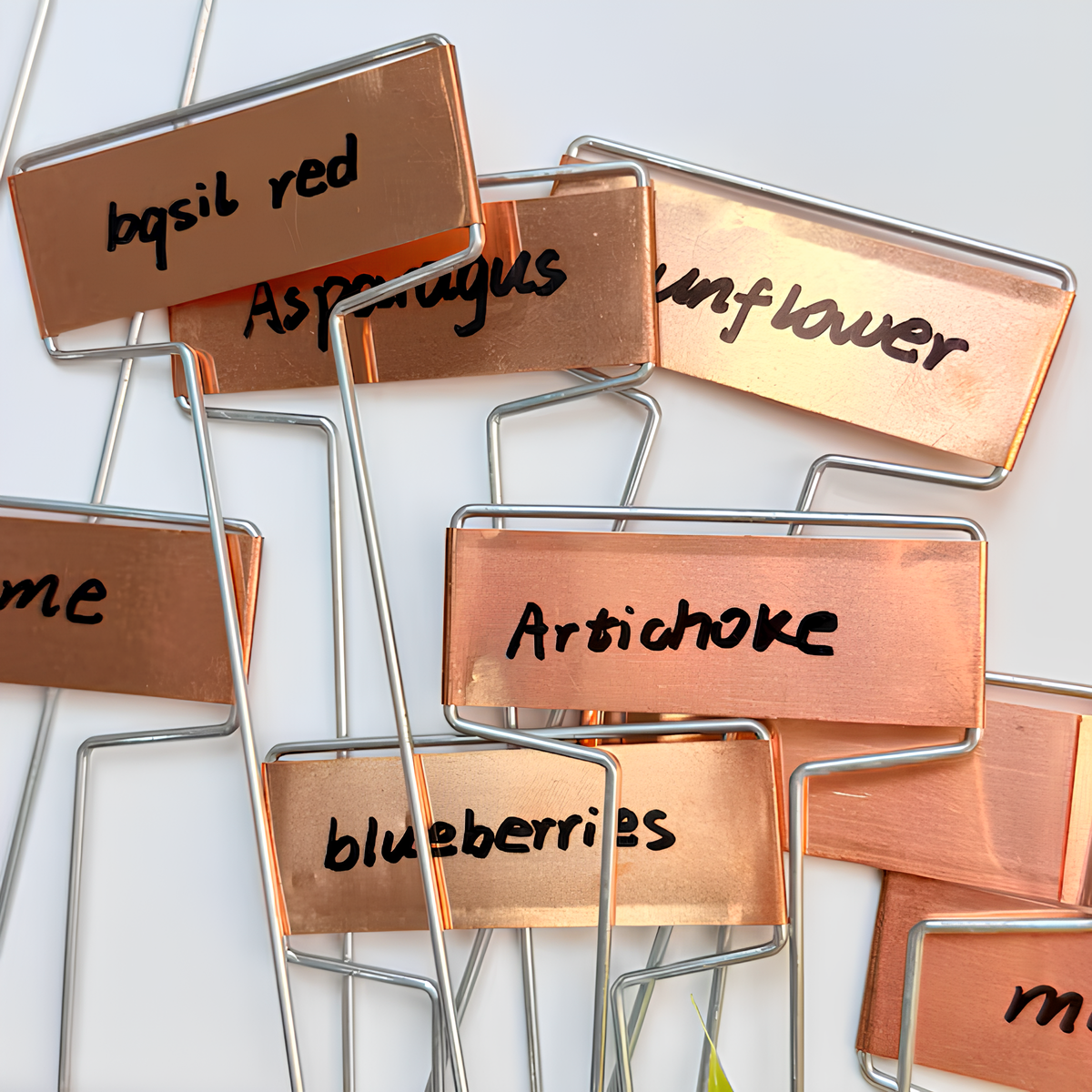Ultimate Guide to Plant Labels:
Benefits, Uses, and Choosing the Best for Your Garden
What Are Plant Labels and Why You
Need Them in Your Garden
Plant labels are an essential yet often overlooked tool in gardening. Whether you're a hobbyist
with a small indoor garden or a professional managing large landscapes, plant labels serve a
crucial role in organizing, identifying, and maintaining your plants. These labels not only help
with plant identification but also allow you to track specific care instructions, planting
dates, and growth stages.
In today's diverse gardening world, plant labels are available in various shapes, sizes,
materials, and designs. The use of plant labels is not just about marking plants; it’s about
providing your plants with the attention they deserve and ensuring their healthy growth. In this
comprehensive guide, we will explore the benefits of plant labels, their various uses, helpful
tips, how to choose the best labels, and even some top brands you can trust.

Top Benefits of Using Plant
Labels for Efficient Gardening
Enhanced Organization: One of the most significant advantages of plant labels is
the organization they provide. In a garden with various plants, it’s easy to forget which plant
is which, especially if they look alike. Labels allow you to clearly mark each plant so you can
avoid confusion and easily track its needs.
Efficient Plant Care: For plant care to be effective, you must understand the
needs of each plant, such as water requirements, sunlight preferences, and the ideal temperature
range. Labels that include these details help ensure that plants receive the correct care at the
right time, minimizing the risk of overwatering or neglect.
Long-Term Record Keeping: Plant labels can serve as a record-keeping tool. By
marking the date of planting, the plant variety, and any special notes about its growth or care,
you can track the progress of your plants. This information can be useful for future gardening
seasons, helping you improve your techniques.
Educational Value: Plant labels are invaluable in educational settings like
schools, botanical gardens, or museums. They help people learn about different species, their
origins, and how to care for them. For gardeners who love to educate others, plant labels are a
simple but effective teaching tool.
Aesthetic Appeal: Modern plant labels come in various styles that can blend
seamlessly into your garden's aesthetic. Whether you prefer a rustic wooden label or a sleek
metal one, plant labels can complement the beauty of your garden while serving a functional
purpose.

How to Use Plant Labels for
Effective Garden Management
Personal Gardens: In backyard gardens or small home gardens, plant labels help
identify which plant is which, whether it's a flower, herb, vegetable, or shrub. They are
especially useful in vegetable gardens where plants can look very similar, helping you to know
what’s what as they grow.
Landscaping Projects: For landscaping professionals, plant labels are essential
when planting multiple varieties of shrubs, flowers, or trees. Labels can be used not only for
identification but also for tracking which plants require different maintenance schedules.
Commercial Nurseries: Commercial plant growers and nurseries use plant labels to
organize large inventories of plants. Labels help employees and customers identify plants,
understand care instructions, and even assist in plant sales by providing information about
growth habits, potential pests, and disease management.
Educational Gardens: In botanical gardens, research facilities, or schools,
plant labels help provide information about different species to visitors. These labels might
include scientific names, common names, growth information, and more. They turn a simple walk
through a garden into a valuable learning experience.
Indoor Plants: Even if you're just growing a few houseplants, labels are handy.
They help identify plants and keep track of their needs, such as light conditions or when they
need repotting.

Conclusion
Plant labels are more than just markers for identifying plants. They are tools for efficient
garden management, plant care, and education. Whether you have a handful of houseplants or an
entire greenhouse, the right labels can help you stay organized, keep track of your plant’s
needs, and ensure a successful gardening experience. By selecting durable, aesthetically
pleasing, and functional labels, you can add another layer of care to your gardening practices.
FAQs about Plant Labels
What are plant labels made of? Plant labels can be crafted from a range of
materials such as plastic, metal, wood, bamboo, ceramic, and even biodegradable materials. Each
material has its pros and cons, and the choice of material will depend on the specific needs of
your garden and the weather conditions in your area.
How long do plant labels last? The durability of plant labels depends on the
material used. Plastic and metal labels are generally long-lasting and can withstand harsh
weather conditions. Wooden labels, on the other hand, may degrade over time due to exposure to
rain and sunlight, while biodegradable labels may naturally decompose over a period of months or
years.
Can plant labels be used indoors? Yes, plant labels are useful indoors for
houseplants, providing clear identification and care instructions. Indoor labels can help
maintain a plant’s health by reminding you of its specific care needs, like watering schedules
or light preferences.

Are there waterproof plant labels? Many plant labels, especially those made from
plastic, metal, or ceramic, are waterproof. Waterproof labels are ideal for outdoor gardening as
they won’t get damaged by rain or humidity. Some labels come with waterproof pens or markers so
that the writing remains visible in all weather conditions.
Can I write on plant labels? Most plant labels come with a writable surface,
allowing you to write the plant’s name, planting date, care instructions, or any other relevant
information. Some labels are pre-printed with space for writing, while others are blank,
offering full customization.
Tips for Using Plant Labels
Positioning: Place your plant labels near the base of the plant so they are
visible but not buried by soil or overshadowed by growing foliage. Labels should be placed
securely in the ground to prevent them from falling over.
Clear Writing: Use waterproof, permanent markers or pens to ensure that your
writing stays legible, even after exposure to rain and sunlight. If you’re labeling edible
plants, make sure the marker is non-toxic and safe for the plants.
Label Size: Choose labels of the right size for your plants. Smaller labels are
suitable for houseplants or tiny seedlings, while larger labels work better in vegetable gardens
or for trees and shrubs.

Color Coding: For large gardens, consider using color-coded labels to organize
plants into different categories, such as flowers, herbs, or vegetables. This makes it easier to
identify plants at a glance.
Renew Labels Regularly: Over time, labels can become worn, faded, or damaged.
Check your labels periodically and replace them when necessary to maintain clear identification.
Why Use Plant Labels?
Plant labels simplify gardening tasks and enhance the overall experience. By keeping track of
important information, such as care instructions, planting dates, and plant varieties, you can
optimize the growing conditions for each plant. They also provide a professional appearance to
your garden and allow you to be more organized, making gardening less stressful and more
enjoyable.
Choosing the Best Plant Labels
Durability: Choose a material that can withstand outdoor conditions, especially
if you're gardening in areas with extreme temperatures or heavy rainfall. Durable materials like
metal or UV-resistant plastic are great choices.
Size and Visibility: Ensure the labels are large enough to be easily seen and
read from a distance. A bigger label is particularly helpful in larger gardens or public spaces.

Weather Resistance: Opt for labels that are weatherproof, especially if they’ll
be exposed to the elements. Waterproof labels ensure your information stays legible and intact
in rain or snow.
Eco-Friendliness: For eco-conscious gardeners, sustainable plant labels made
from biodegradable materials such as bamboo or recycled plastic are great choices. They help
reduce environmental impact while still serving their function.
Top Brands for Plant Labels
Gardener’s Supply Company: Known for their high-quality and durable plant
labels, this brand offers a variety of options, from simple plastic labels to stylish metal and
wooden varieties.
Plant Labels Direct: This brand offers customizable plant labels, making them a
great choice for businesses, botanical gardens, or anyone who needs personalized labeling
options.
Vivosun: Vivosun is popular for offering waterproof, durable plant labels that
are perfect for both indoor and outdoor use.
The Home Depot: Known for carrying a wide selection of plant labels for all
gardening needs, The Home Depot offers both practical and decorative labels to suit any
gardener.
Safety Tips
Sharp Edges: Some plant labels, especially those made from metal, may have sharp
edges. Handle them carefully to avoid injury.
Eco-Friendly Options: If you’re looking to reduce your environmental footprint,
consider biodegradable or recyclable plant labels made from sustainable materials.
Non-Toxic Markers: When labeling edible plants, use non-toxic, waterproof
markers to ensure the safety of your plants and those who consume them.

Final Thoughts
Plant labels are a simple yet powerful tool for organizing and maintaining a garden. From
improving plant care to providing educational benefits, they are indispensable for any serious
gardener. Whether you’re a beginner or an expert, investing in quality plant labels will save
you time, improve plant health, and enhance the beauty of your garden. Choose labels that suit
your specific needs, and watch your gardening experience flourish.





